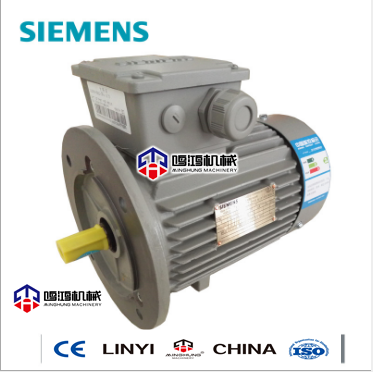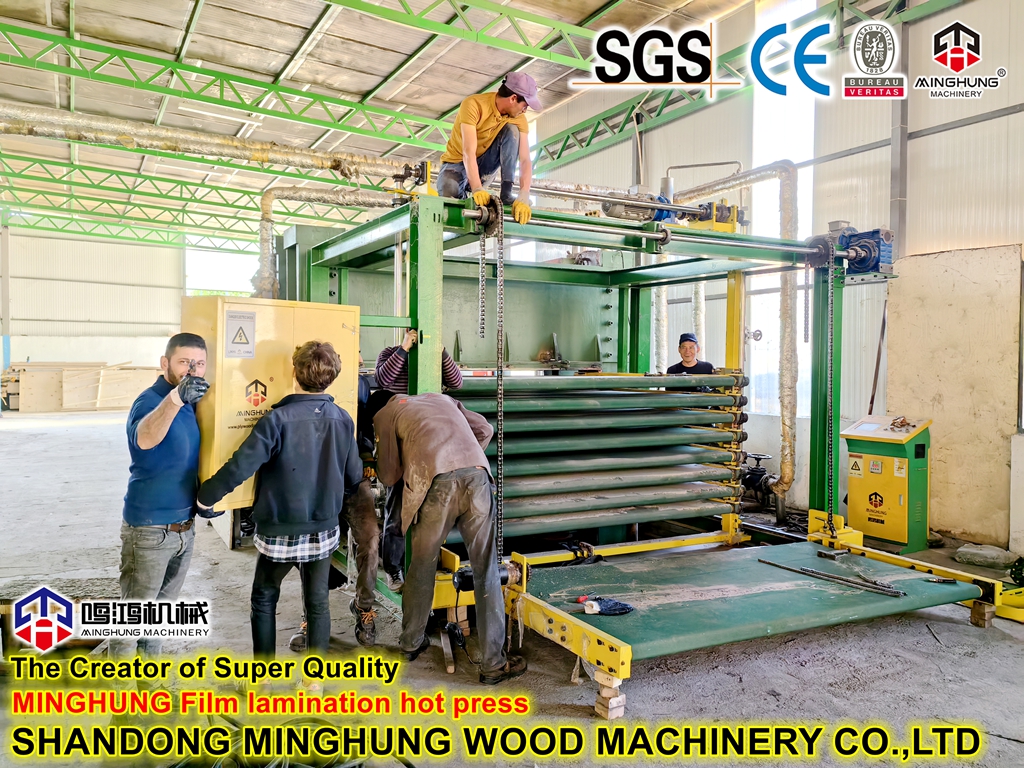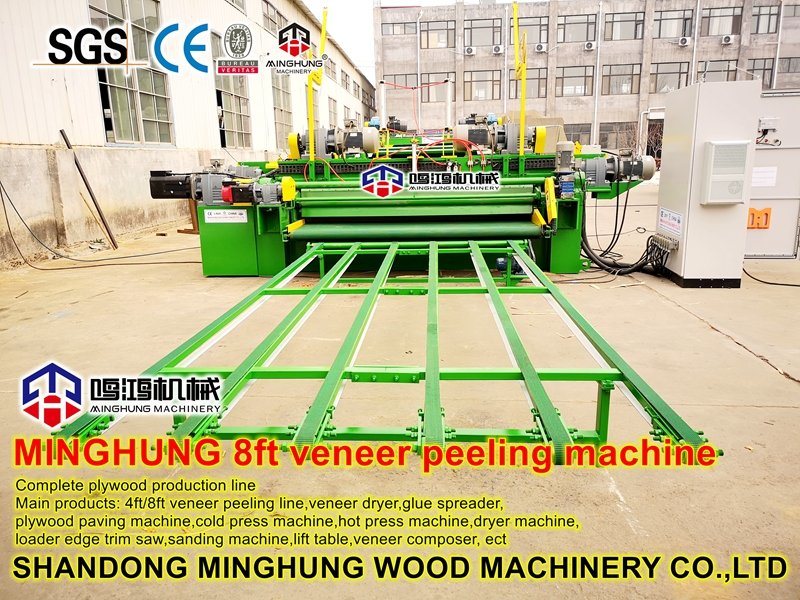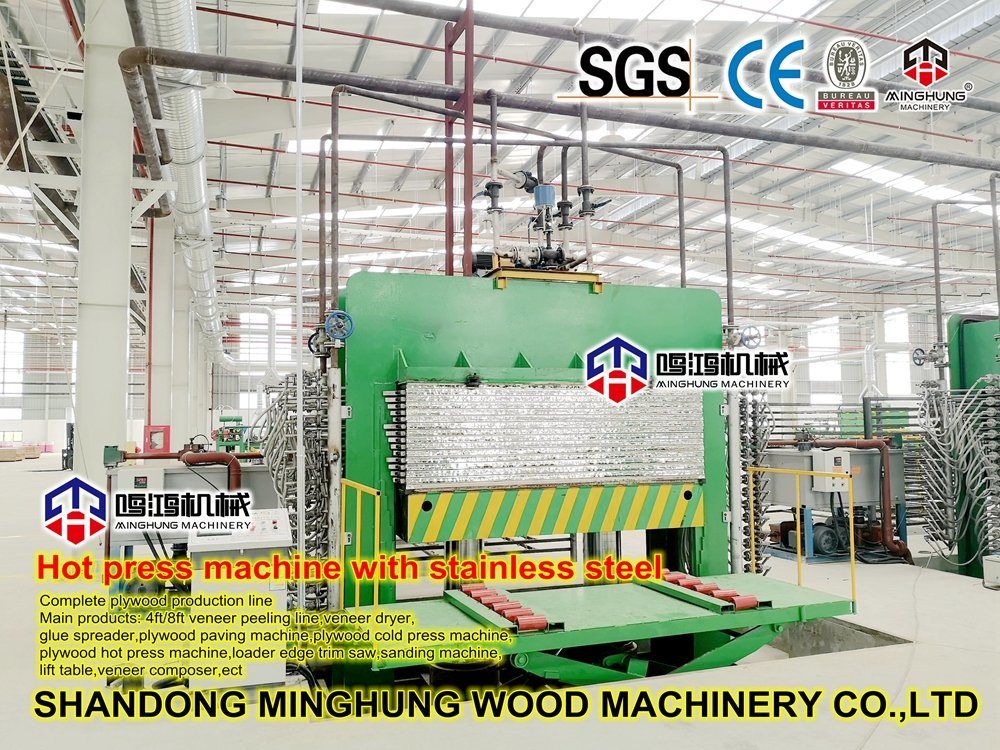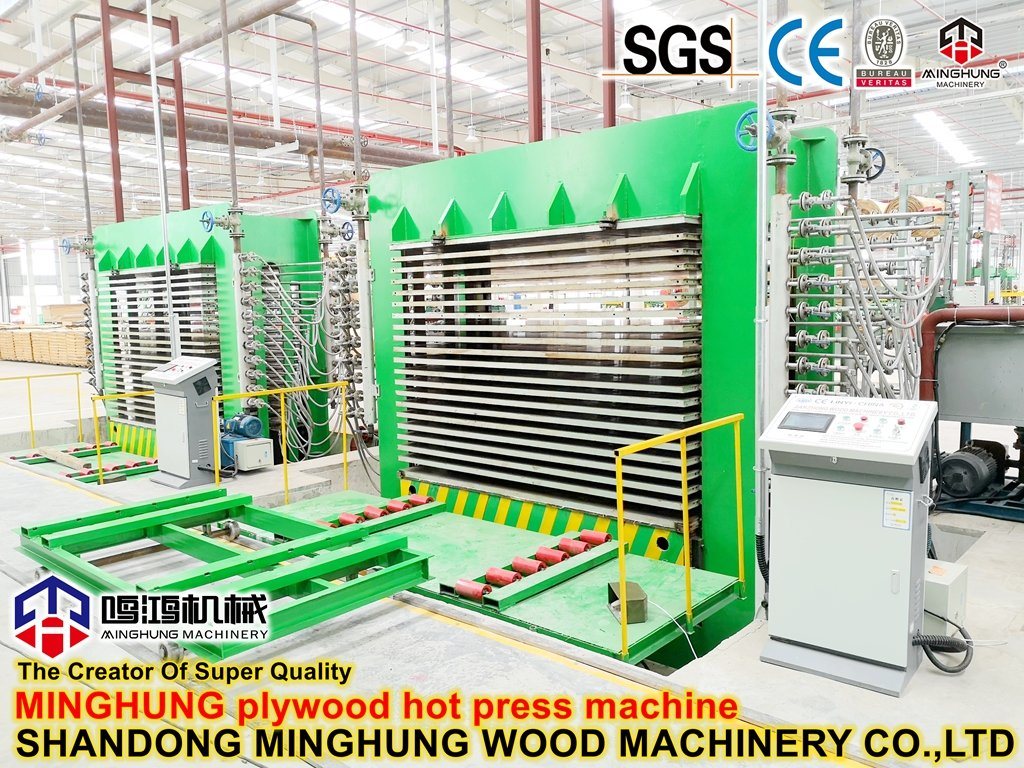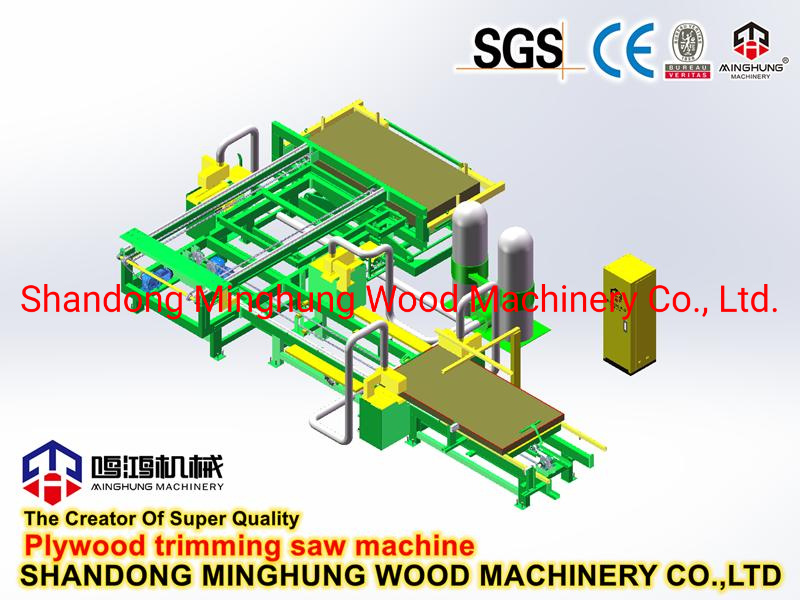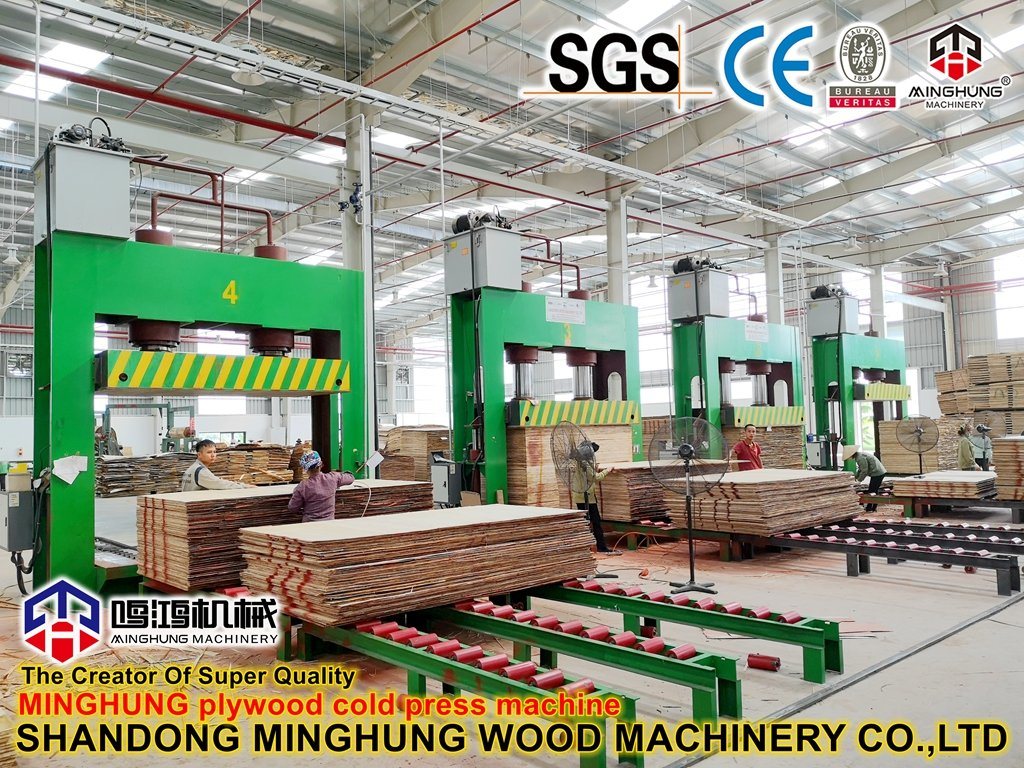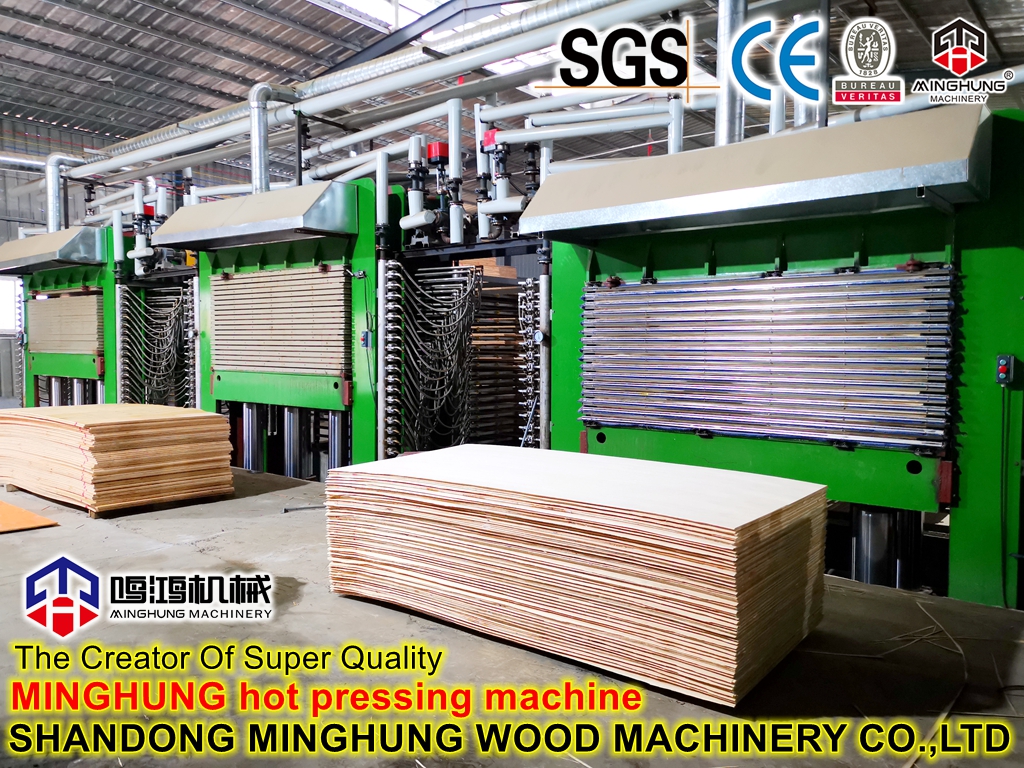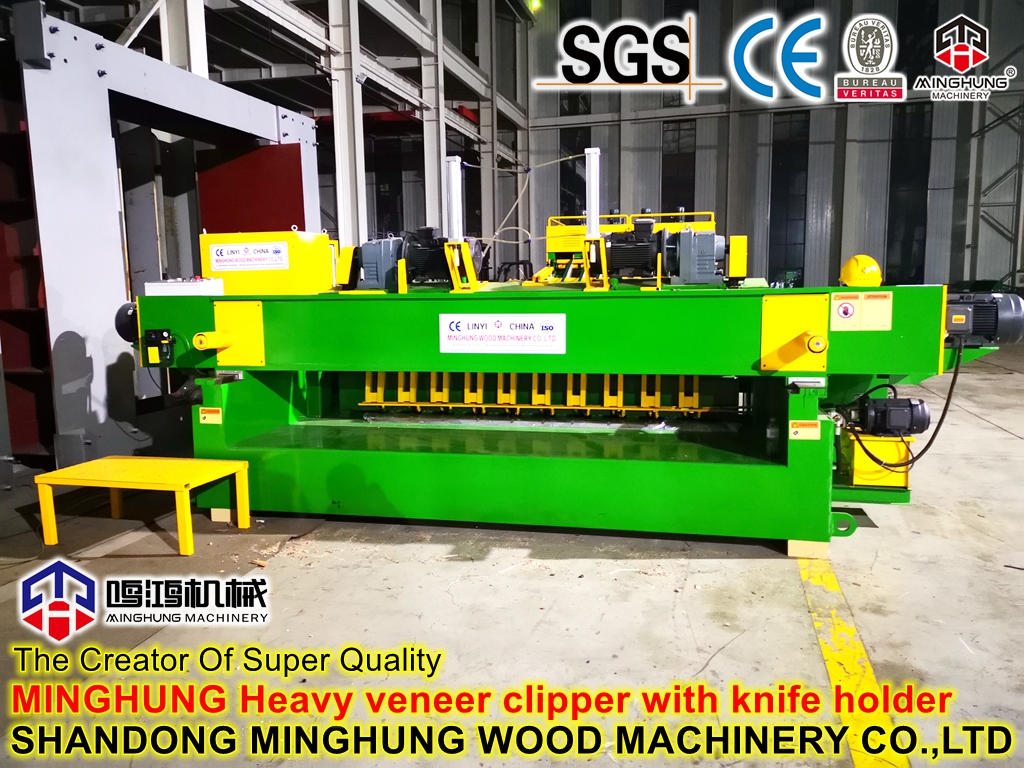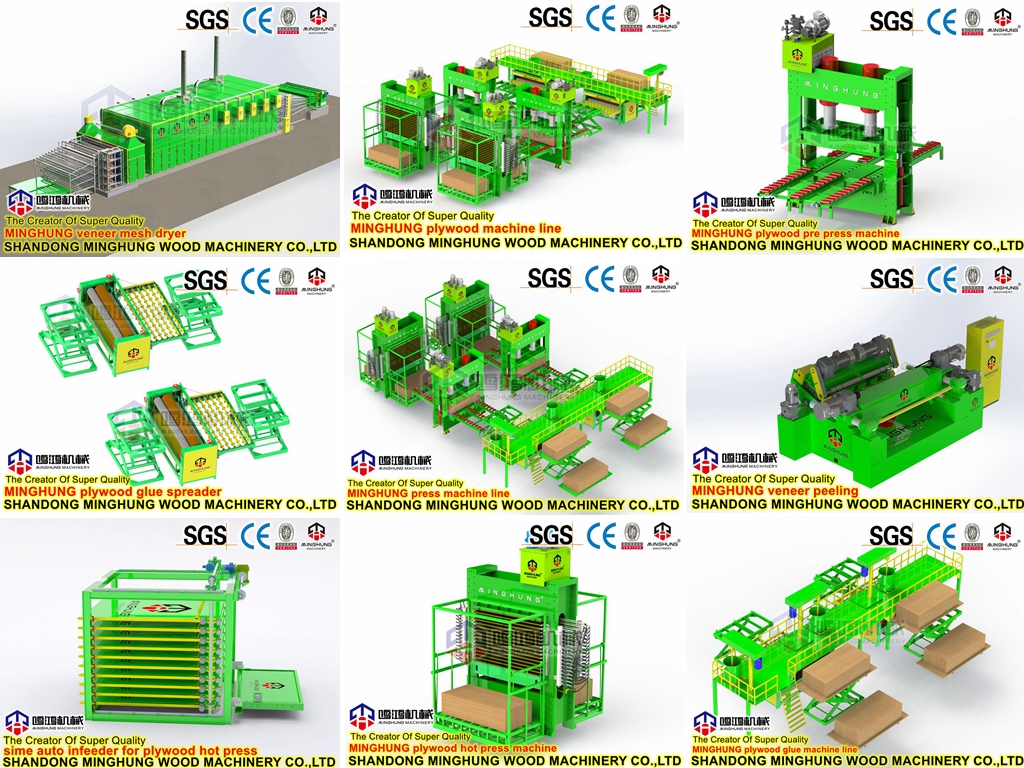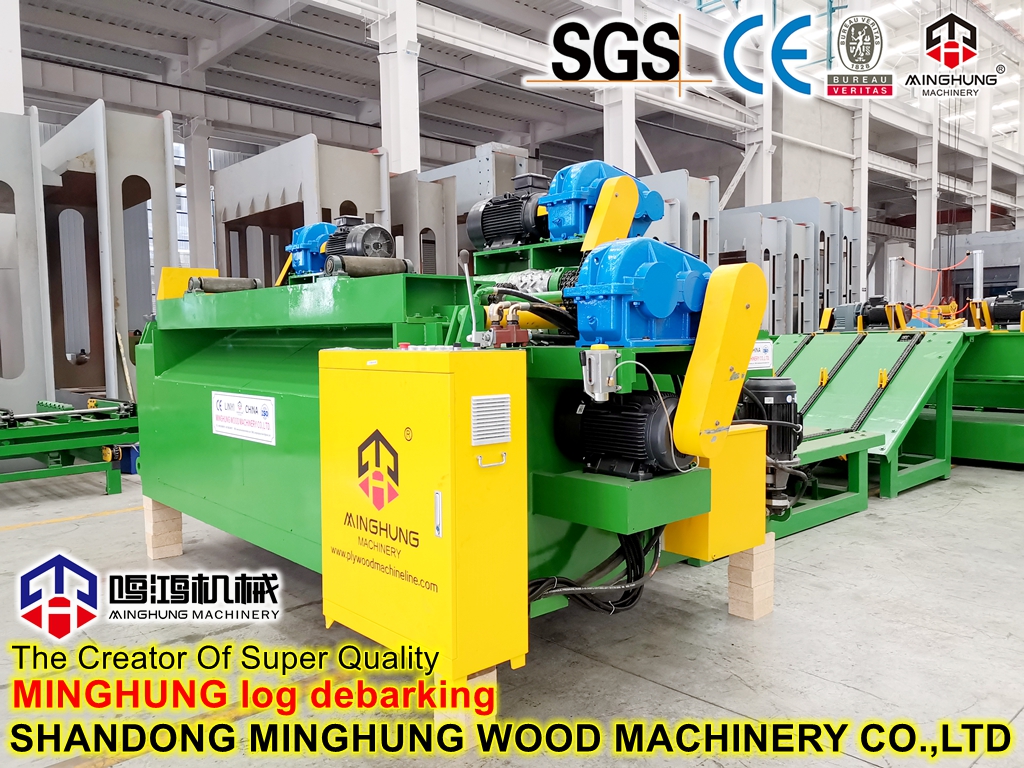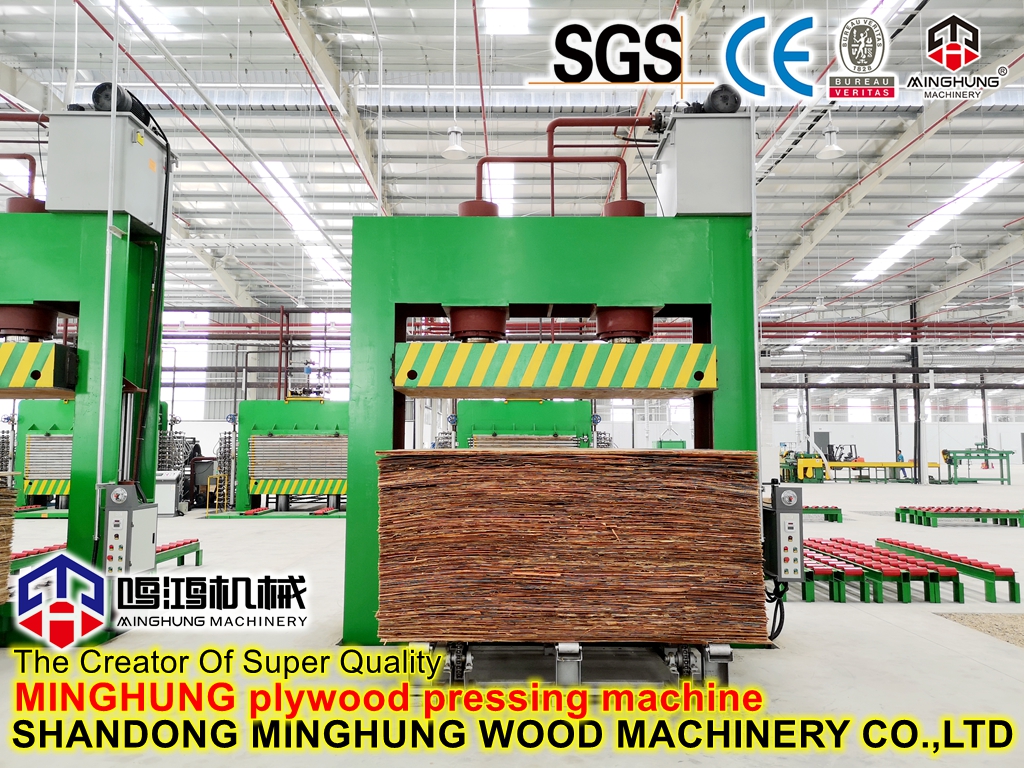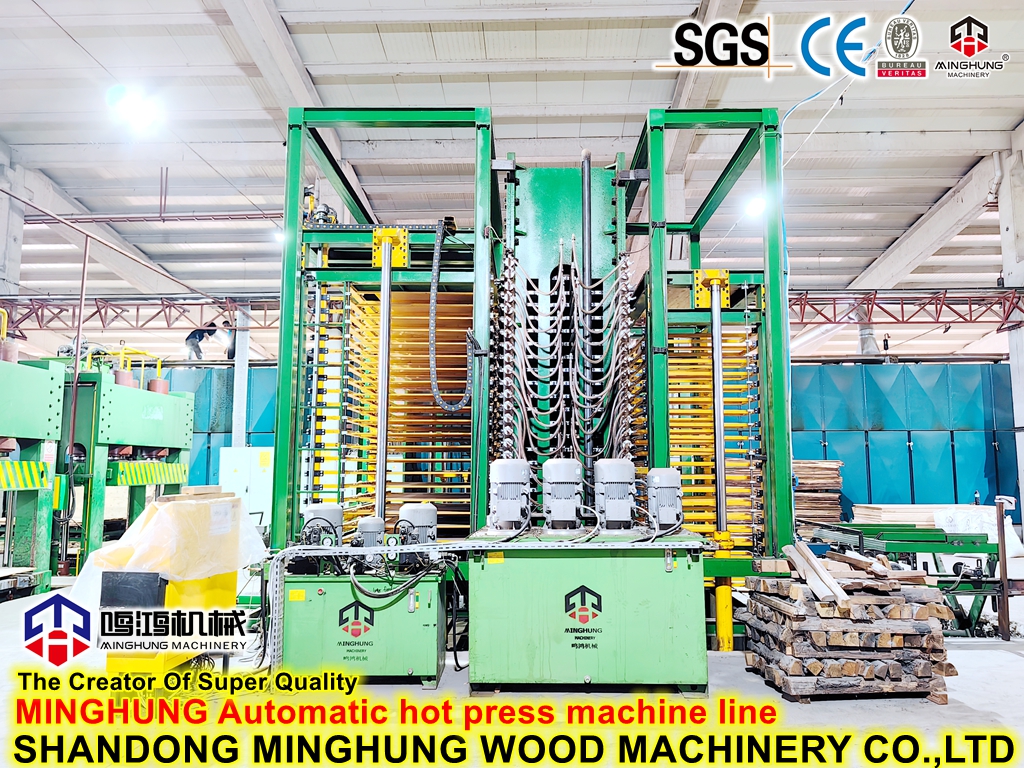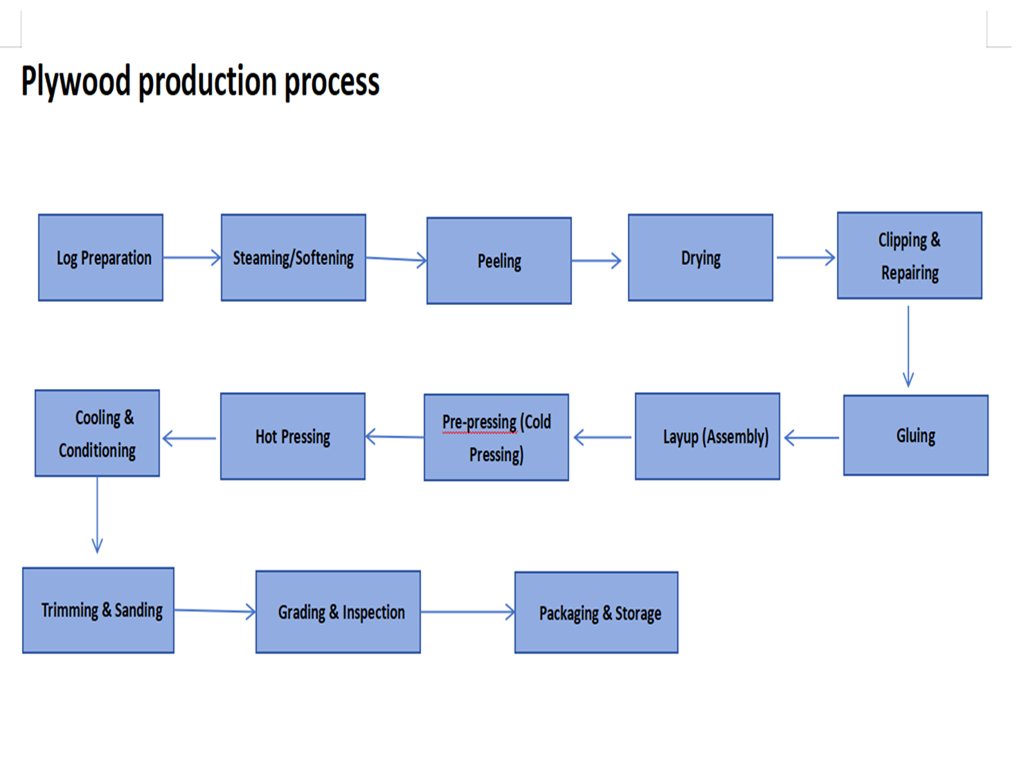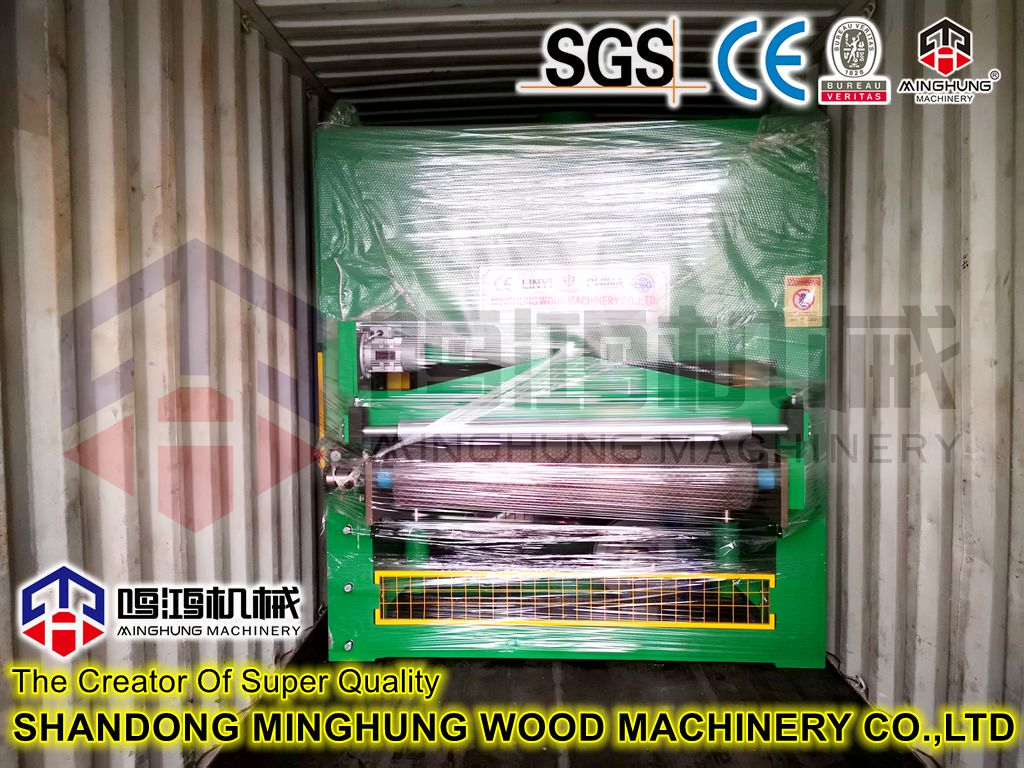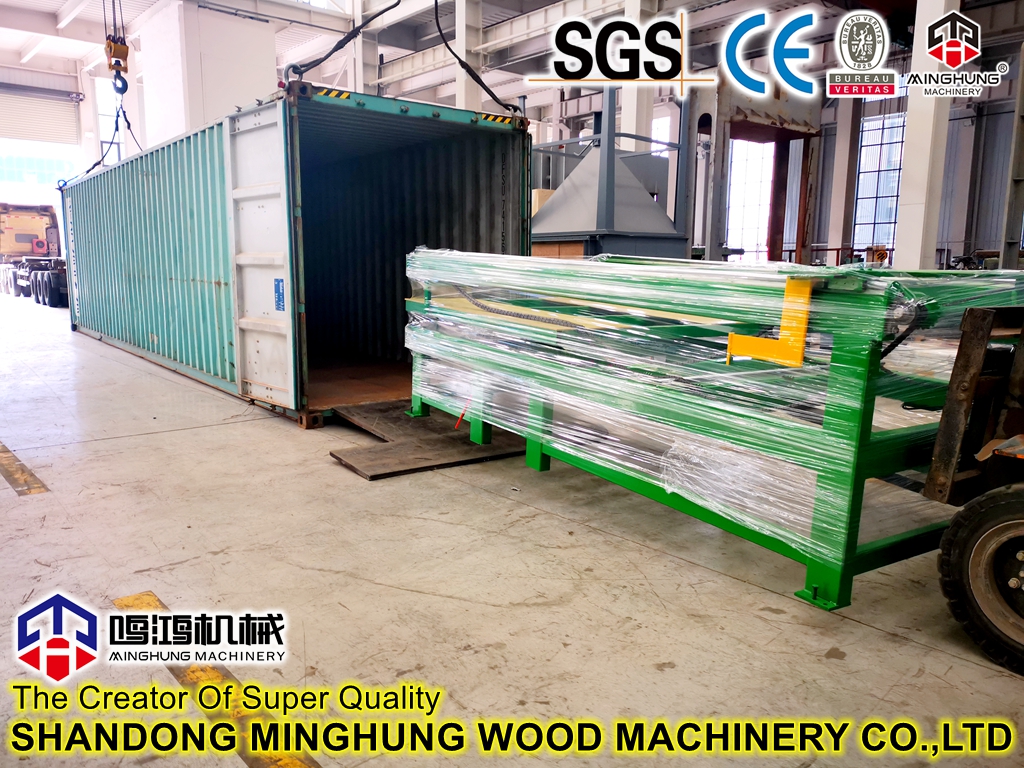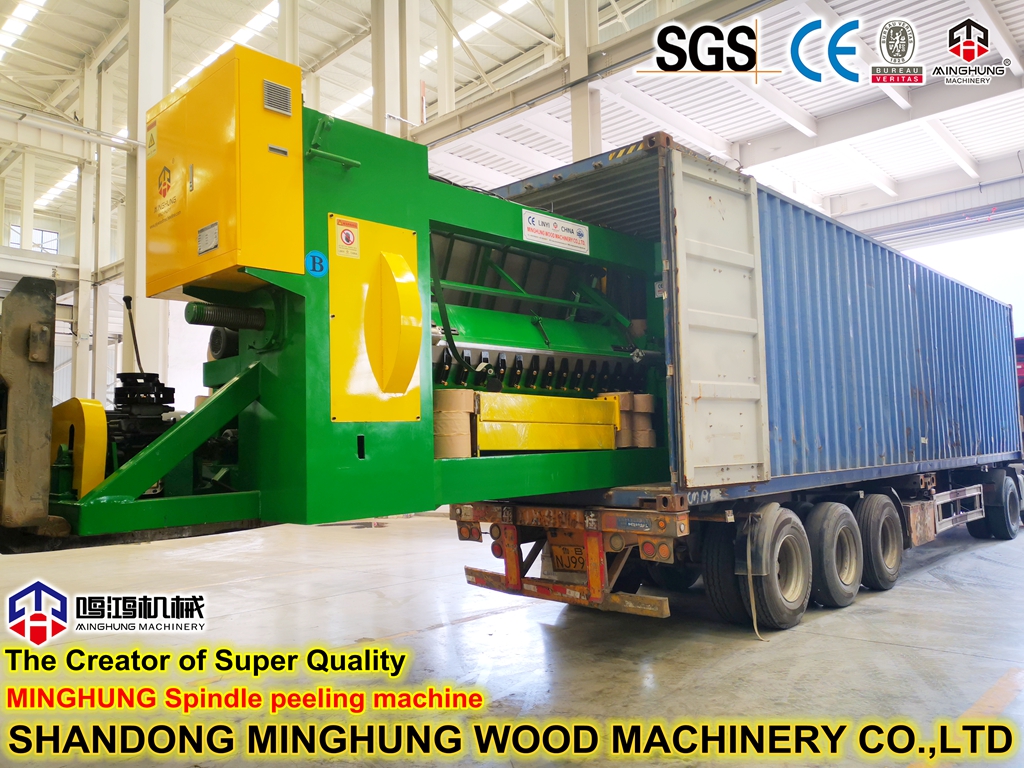A complete plywood production line is a complex system divided into several core sections:
Section 1: Log Processing & Veneer Preparation
Aims to process logs into flat, dry, and Conforming to specifications veneers.
1. Log Debarker: Removes bark, sand, and stones from logs to protect cutting tools and ensure veneer quality. (Types: Drum, Ring debarkers).
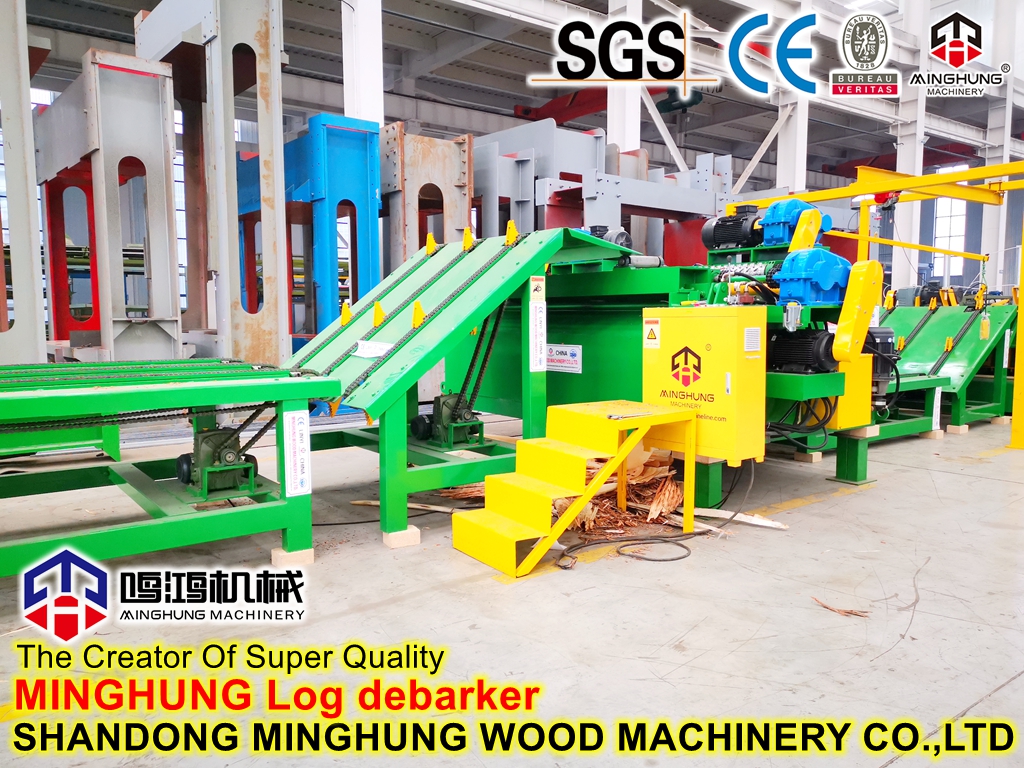
2. Log Bucking Saw: Cuts long logs into required lengths (e.g., 1300mm, 2600mm).
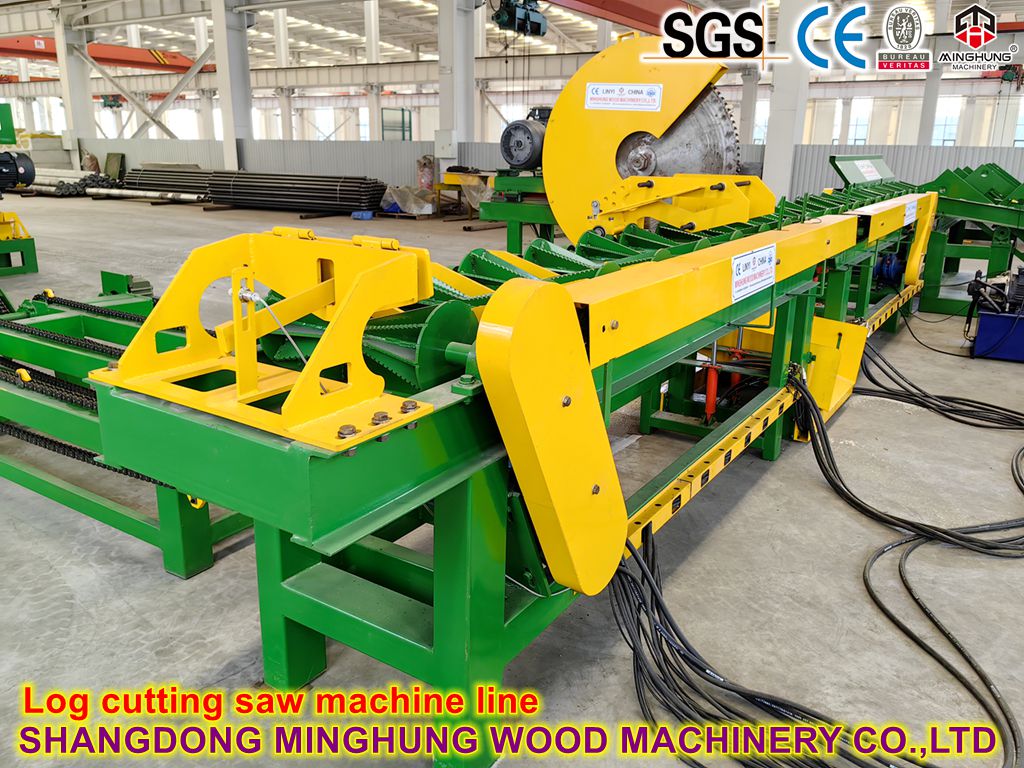
3. Log Steaming Pond/Vat: Softens logs using hot water/steam to facilitate peeling and reduce veneer defects. Critical for thick veneer.
4. Veneer Lathe: (A Core Machine). Peels softened logs into continuous, consistent-thickness veneer ribbons. Key parameters: max log diameter/length, adjustable veneer thickness (e.g., 1.5-4.5mm).
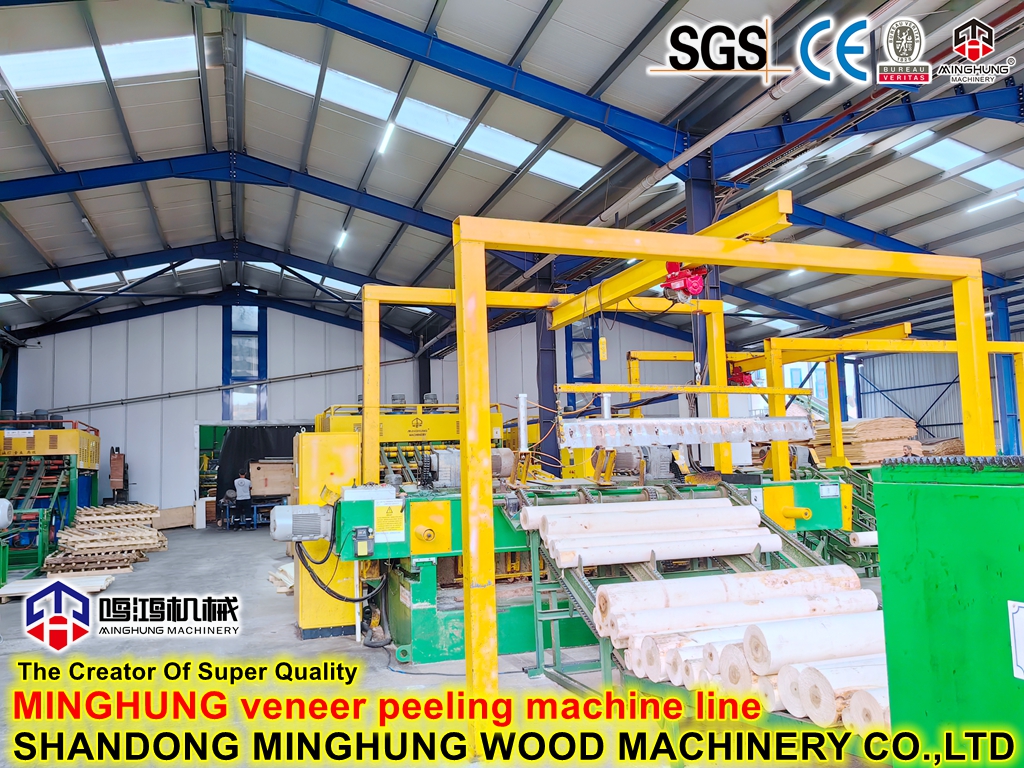
5. Veneer Clipper: Cuts the continuous veneer ribbon into sheets of required width and length.
6. Veneer Dryer: (Critical Equipment). Dries wet veneer to achieve 8-12% moisture content. (Types: Roller dryer, Mesh-belt dryer). Poor drying causes delamination and bubbles after pressing.
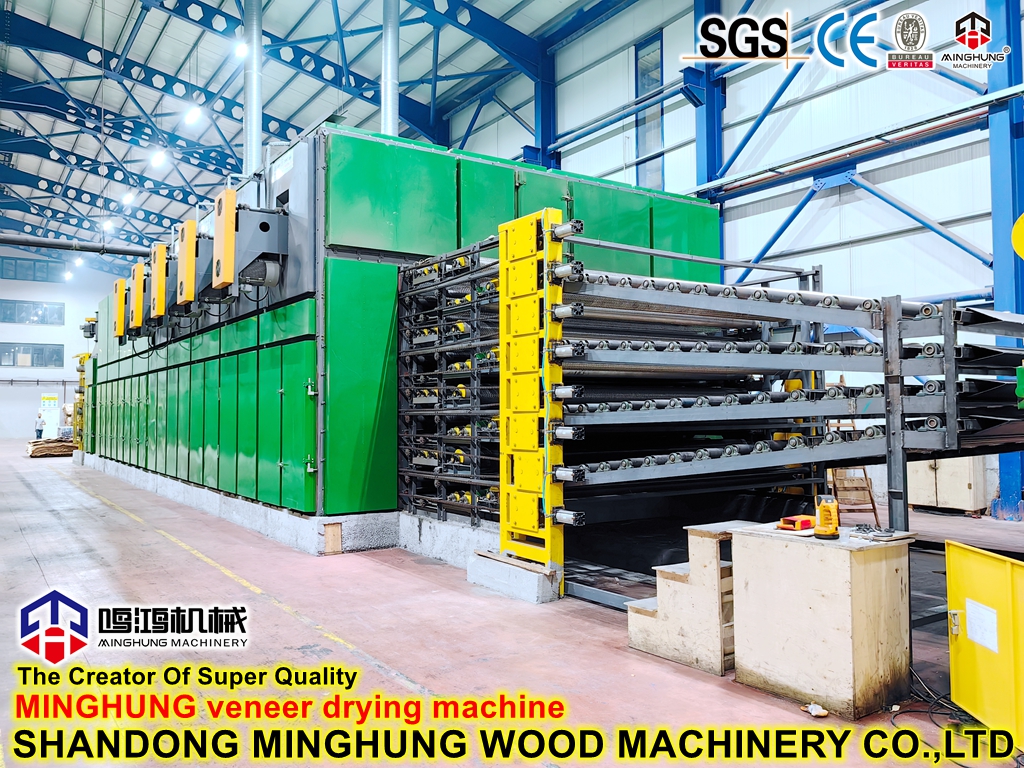
7. Veneer Sorting & Patching Equipment:
Sorting Table: Manual/automatic sorting by grade/size.
Veneer Splicer: Joins narrow veneers into full-size sheets.
Veneer Patcher: Repairs knots and defects with patches to improve yield and grade.
Section 2: Gluing & Lay-up
Aims to apply adhesive to veneers and assemble them into mats.
8. Glue Spreader: Applies a uniform, controlled amount of adhesive (e.g., UF, PF resin) to veneer surfaces. (Typically 4-roll spreader). Glue spread amount is critical for bond strength and formaldehyde emissions.

9. Lay-up Line / Assembly Line: Assembles glued core/center veneers with unglued face/back veneers into mats manually or automatically. Includes a curing time for initial glue penetration.
Section 3: Hot Pressing - The Core Section
Transforms loose mats into solid panels.
10. Pre-press: Applies light pressure (cold press) to the assembled mat for initial bonding, making it easier to handle and load into the hot press without falling apart.
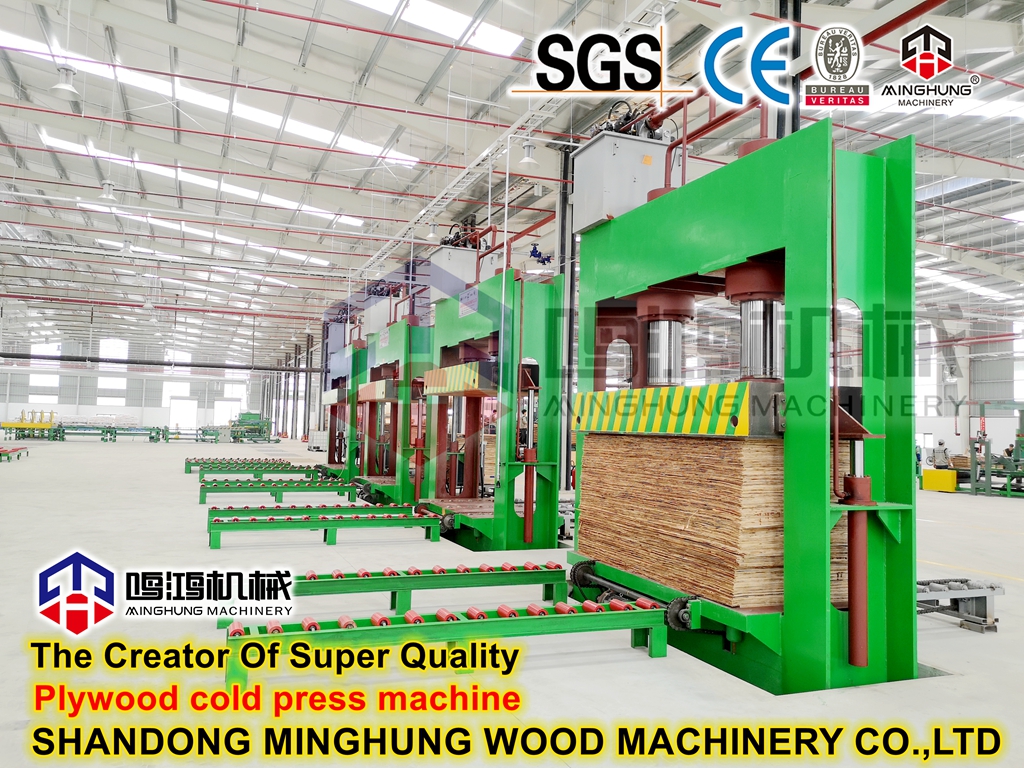
11. Loading/Unloading & Conveyor System: Automatically feeds mats into each press opening and unloads finished panels. Enables full automation.
12. Multi-opening Hot Press: (The Heart of the Line). Applies high temperature (140-180°C) and high pressure (20-30 MPa) to cure the adhesive rapidly.
Structure: Utilizes a frame or column structure with multiple heated platens (often 10-20 or more, depending on design capacity) that can press multiple mats simultaneously.
Heating Method: Employs Thermal Oil Heating or Steam Heating to ensure rapid heat-up and uniform, stable platen temperature, which is critical for curing the core layer of thick boards (e.g., 40mm).
Hydraulic System: Uses high-performance hydraulic power units and precision cylinders to provide high pressure (typically up to 25-30 MPa), stable, and multi-stage controllable pressure. For thick board production, the system features pressure holding and decompression control to prevent quality defects like "blowouts."
Features for 18-40mm Thick Board:
Large Opening: High daylight between platens for thick mats.
High Tonnage: Powerful hydraulic system for effective pressure transfer to the core.
Simultaneous Closing System: Ensures consistent quality across all openings.
Multi-stage Pressure Control: Prevents "blowouts" in thick boards.
Heat Source: High-temperature thermal oil system is common.

Section 4: Finishing & Processing
Processes the pressed panels into finished products.
13. Cooling Rack: Cools the hot panels (naturally or forced) to release internal stress and stabilize dimensions.
14. Double-sided Calibrating Sander: (Essential Equipment). Eliminates thickness variation, pre-cured layers, and surface defects. Provides precise thickness and a smooth surface for further processing. Higher sanding capacity is needed for thick boards.
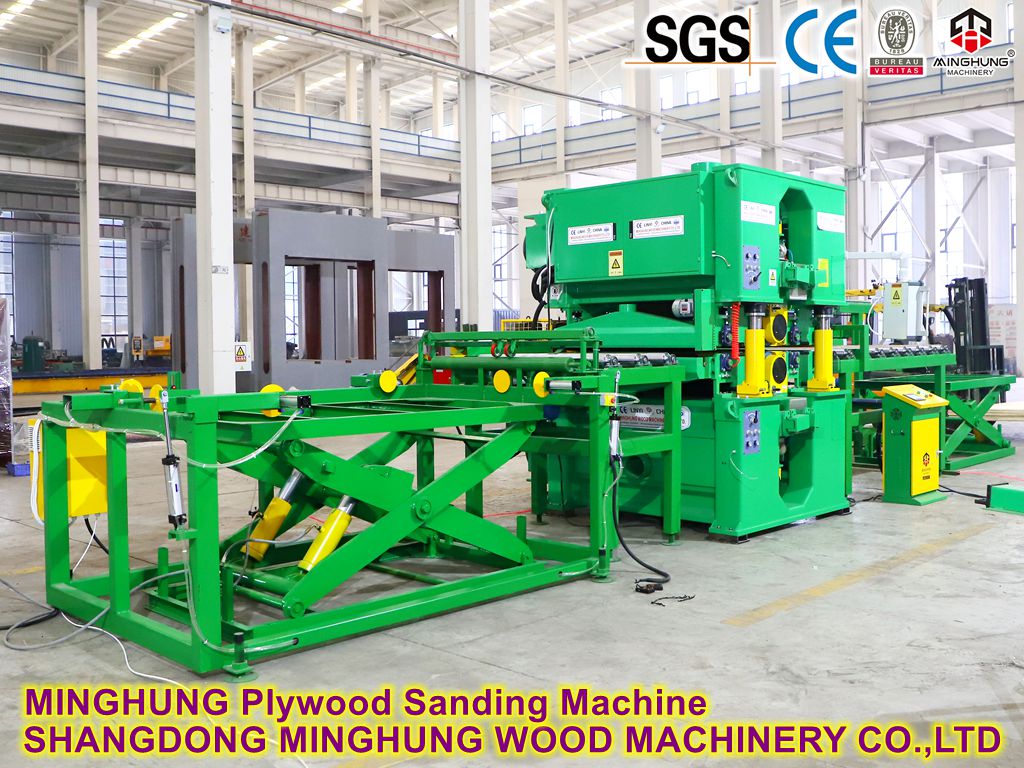
15. Trimming & Cross-cutting Saw: Saws the rough edges to achieve standard panel dimensions.

16. Grading & Inspection Table: Inspects and grades finished panels according to standards (e.g., AA, AB, BB) based on appearance.
17. Packaging Machine: Stacks and bundles panels of the same grade with plastic film and/or straps for storage and shipping.



